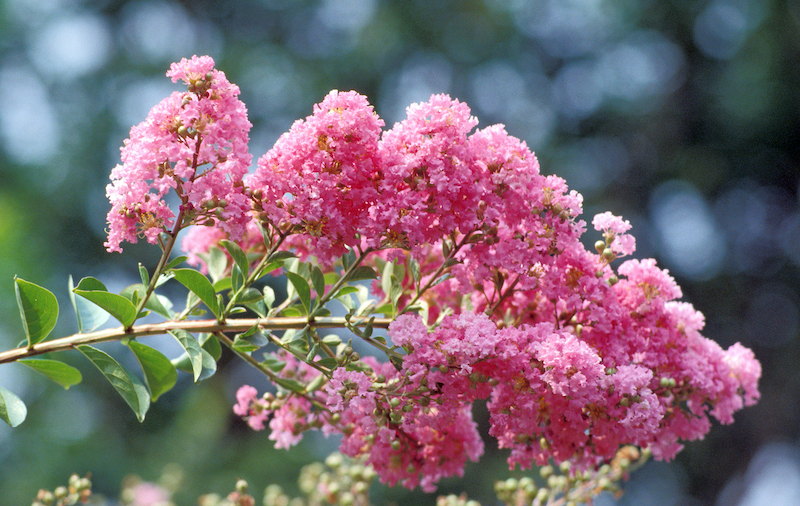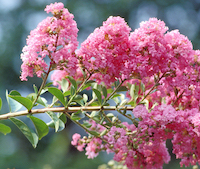The calendar says January, but the weather for the last few weeks has been screaming March.
The unseasonable warmth means a lot of folks are getting in their yards, looking for something to keep them outdoors a little longer. It’s the perfect time to prune summer-blooming shrubs and trees like crape myrtles and tea olives.
There’s no one-size-fits-all pruning rule; it’s as much a science as it is an art. There are, however, some basic techniques that can help novice gardeners avoid mistakes that can cause their shrubs lasting damage.
"The keys to proper pruning are timing, technique and the right equipment," said Bob Westerfield, a University of Georgia Cooperative Extension horticulturist.
Go slow, be selective and don’t prune angry.
It can be cathartic to start lopping off tree limbs left and right, but pruning is not the time to work out your anger issues. Gardeners need to know what to prune and what to leave alone until spring.
The time to prune summer-blooming plants and most woody ornamentals is January through early March. These include:
- Beautyberry
- Camellia
- Chaste tree (Vitex)
- Cranberrybush (Viburnum)
- Crape myrtle
- Floribunda roses
- Fragrant tea olive
- Glossy abelia
- Goldenrain tree
- Grandiflora roses
- Japanese barberry
- Japanese spirea
- Mimosa
- Nandina
- Rose of Sharon (Althea)
- Sourwood
- ‘Anthony Waterer’ spirea
- Sweetshrub
You need to prune spring-flowering plants like azalea, forsythia and dogwood soon after they bloom.
"Of course, if you see dead plant material, you can prune that off any time of year," Westerfield said.
Pruning is often necessary for your plants' health. It's a way to remove disease and keep your plants looking good. It can also rejuvenate older, overgrown shrubs.
Proper tools are a key to successful pruning.
"Steer away from gas-powered pruners," Westerfield said. "Hand-operated shears work wonderfully as long as you keep your instruments sharp so they cut the plant instead of tearing it."
Hand pruners are perhaps your most essential pruning tool.
"Buy the best quality you can afford and you won't have to keep going back to the store for a new pair every year," he said. "The draw-cut, or scissor, type is the most useful."
The anvil-type hard pruners tend to crush limbs rather than cut them.
Use lopping shears to prune small trees or shrubs, like crape myrtles, with a branch diameter of up to 1.5 inches. For plants with branches more than 2 inches thick, use a pruning saw.
Heading or thinning
Now that you have the proper tools, you're ready to start pruning. There are two methods: heading and thinning.
"Heading is when you shear across the plant nonselectively," Westerfield said. "This method is normally used on boxwoods to give them that formal look."
Use heading sparingly, as it causes new growth to grow back too thick, choking air and light from the interior branches of the shrub.
Thinning is more useful and will lead to a healthier shrub in the spring. Gas or electric hedge trimmers are notorious for causing thick growth at the tips of branches.
"Use thinning to prune out sections of the plant to allow more light and air inside," he said. "The increased air reduces diseases and insects like spider mites."
How you prune determines the shape of your plant.
"If you leave buds on the outside, it causes the plant to grow outward and spread," he said. "If you leave buds on the inside it causes the plant to fill out from within."
Let in air and light.
Westerfield reminds home landscapers to always leave the bottom of the plant larger than the top while pruning so that the plant forms a pyramid shape. "If you don't, you'll cause a canopy effect, and no light will get in," he said.
Make your cuts at a slant, too, and at a fraction above the bud. The slant will allow water to roll off the newly cut surface.
Don't use pruning paints.
"They're unnecessary and may slow the cuts' healing," Westerfield said.
Complement pruning by going easy with the fertilizer. You want your plants to put any stored energy they have into healing, not into sending new shoots.
UGA Extension will offer an in-depth pruning workshop from 9 a.m. to 3 p.m. on February 10 at the UGA Griffin Campus. The cost of the workshop is $59 and includes lunch, snacks and printed materials. For more information, email Beth Horne at bhorne@uga.edu or call 770-228-7214.
UGA Extension has a number of free, online publications with diagrams that can help gardeners figure out which plants need pruning, when pruning is necessary and what techniques are needed for each shrub. Visit extension.uga.edu/publications and search “pruning” or call your local Extension office at 1-800-ASK-UGA1.








